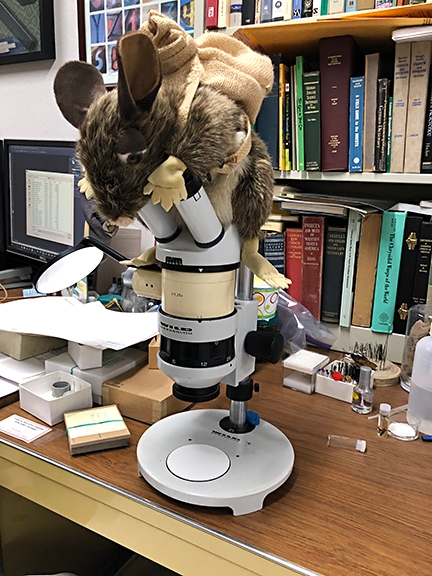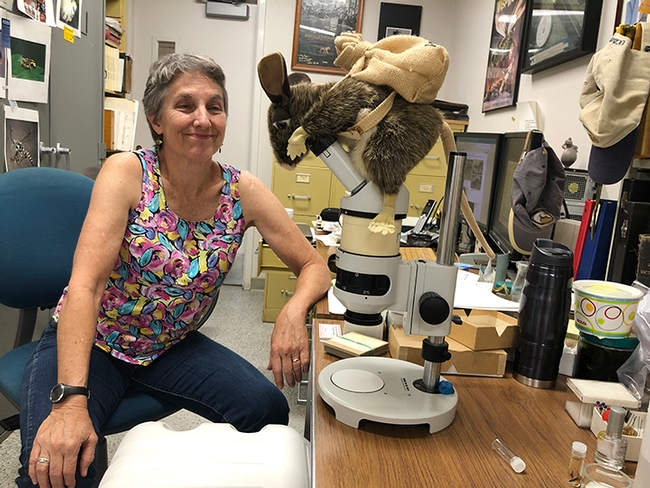
The desk, yes. The books, yes. The specimens, yes.
Wait, what's that protective cover on the microscope? Could it be? It is. A pack rat. The stuffed-toy-animal kind...
"I got the pack rat at the Desert Museum in Tucson last summer," Kimsey said. "Folks don't seem to notice it at first, then they do a double take."
Pack rats, also called wood rats, belong to the genus Neotoma. Everything about them is large--long tails, large ears and large black eyes.
Ditto for this one.
Kimsey, professor of entomology at UC Davis, keeps busy with research, education and public service. Thus, the protective cover doesn't cover her microscope for long; she's busy using it.
The museum, located in Room 1124 of the Academic Surge Building, 455 Crocker Lane, houses some eight million insect specimens collected worldwide, a gift shop, and a live "petting zoo," which includes Madagascar hissing cockroaches, stick insects or walking sticks, tarantulas and praying mantids.
Kimsey and her colleagues are now gearing up for the Bohart Museum's annual Moth Night on Saturday, Aug. 3, a free and family friendly event set for 8 p.m. to 11 p.m. Visitors will view the moth specimens, talk to scientists, engage in a craft activity (create silk moth cocoon necklaces), and then around 9 or 9:30, head outside for the blacklighting. The scientists will be hanging a white sheet illuminated by a generator-powered ultraviolet (UV) light. Throughout the evening, visitors can see the insects drawn to the white sheet. (See more on Bug Squad.)
A large crowd of area residents is expected: families with children of all ages, scientists, citizen scientists, would-be scientists, educators and students.
And a pack rat will be there, too, dutifully assigned to covering the director's microscope.
Attached Images:
